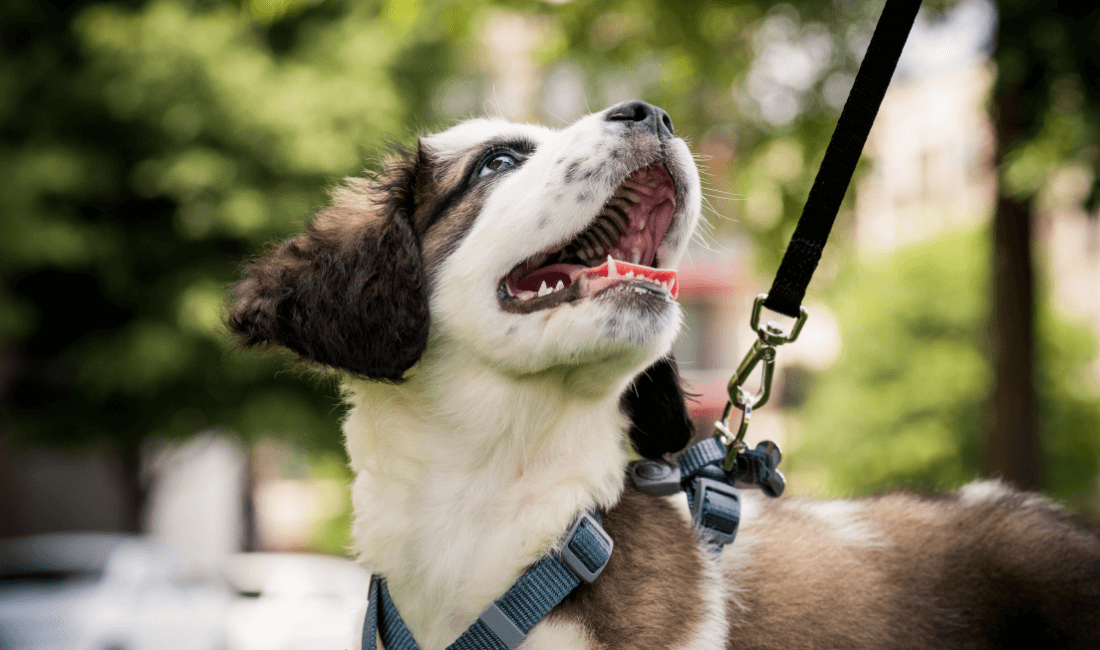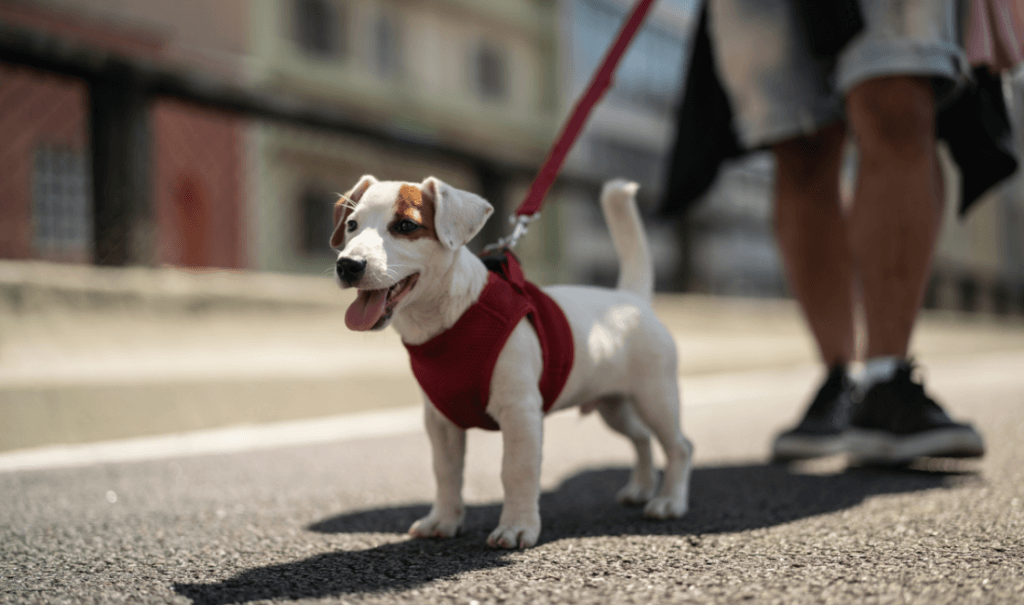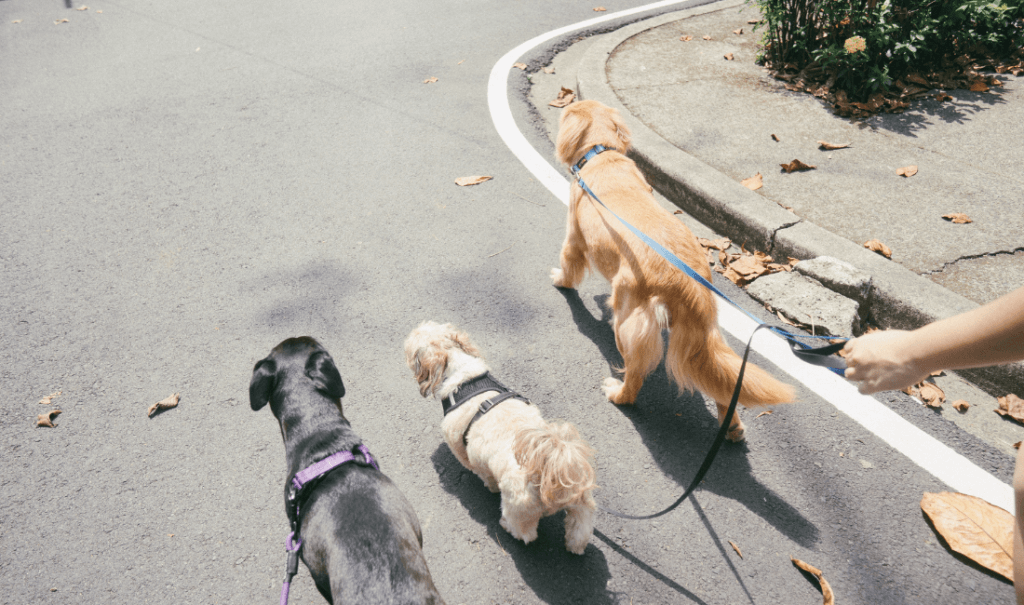
Enjoying the exercise and the fresh air that comes with a long outdoor walk is one of the biggest benefits of dog ownership. But before you click your brand-new leash to your pup’s collar, take a moment to make sure you understand their limitations.
As professional dog walkers, we are frequently asked by new dog owners “How long should I walk my dog?” Well, the answer is “It depends”. The amount of daily exercise your dog needs depends on their breed, age, health, fitness, personality and even the weather conditions.
Here’s a brief guide with some helpful info and tips.
Puppy Vs. Adult Dog
Your new puppy may appear to be a bundle of energy that never stop moving but if you’re wondering when can you take your puppy outside, the generally accepted answer is that puppies shouldn’t venture out into the real world until at least two weeks after their vaccinations schedule is complete. That means around 16 to 18 weeks of age. Of course, just because your puppy is fully vaccinated doesn’t mean that they’re ready to go for day-long hikes. When your puppy is very young, “walks” will mainly consist of a short venture outside to do their “business”, with much more emphasis on indoor play than long exercise sessions. For puppies, a walk that lasts 15 minutes is recommended until they are fully grown so that they do not damage their joints by doing long walks.
Adult dogs, on the other hand, have different walking needs. While 45 minutes or more is ideal, a 30- minute walk is usually an achievable goal for most dog owners and will help to keep your dog fit and well balanced. If you have the time, vets and trainers strongly recommend that you aim at 60 to 80 minutes of walking per day as longer walks can prevent disease and also improve your dog’s mood and behavior on the whole. Dogs that are walked regularly get an opportunity to interact with new environments, sights, smells and sounds.
How Often Should You Walk Your Dog?

As a general rule, you should walk your pooch 3 – 4 times per day for at least 15 minutes. But this can vary according to your dog’s breed, age, size, health conditions and eating habits. A single walk in a day can be perfect for smaller dogs, but large, high-energy dog breeds may require more walks per day. But what happens if you have a busy work schedule, physical limitations, or other reasons you are unable to regularly walk your dog? First, you should know you’re not alone. An estimated 41% of pet parents are not walking their dogs regularly. Fortunately, professional dog-walking services like DOGIZ are available to offer a solution for busy parents like you.
How Long Can Dogs Hold Their Pee?
Dogs are typically capable of holding their bladder for long periods of time, but it’s important to know how long is too long. Younger dogs, especially puppies who aren’t fully potty trained, won’t be able to hold their pee for as long as most adult dogs. This is, in part, due to their undersized and under-developed bladders and urinary tract systems.
Puppies under 6 months old can hold their pee for 1-3 hours and therefore, will need more frequent bathroom breaks. The general rule is to follow the ratio of five minutes of exercise per month of age, at least twice a day until a dog reaches maturity. So, for instance, if a puppy is 4 months, they should be taken outside for 20 minutes, with 5 months, 25 minutes. Once they reach maturity, they can go on longer walks depending on the breed.
Adult dogs, on the other hand, can hold their pee for up to 10-12 hours if needed, but that doesn’t mean that they should. The average adult dog should be allowed to relieve itself at least 3-5 times per day. That’s at least once every 8 hours.
General Dog Walking Tips

Here’s a few important considerations and safety checks to keep in mind along the way.
- Meet your dog’s exercise needs – it’s important to tailor your pup’s exercise according to their stage of life. Adult dogs can perform a larger variety of exercises than puppies and seniors – while puppies get large bursts of energy followed by long periods of rest and napping, senior dogs need more relaxation than stimulation so break up their exercise by offering shorter walks.
- Check the weather conditions- if temperatures are high, consider walking early in the morning or late in the evening. The “5-second rule” can help you decide when it’s too hot to walk- place the back of your hand on the pavement and if you cannot hold it for five seconds, wait for cooler temps.
- Take treats – dogs love positive reinforcement so always make sure you have some treats handy.
- Pay attention to your dog – avoid zoning out or talking on the phone. Even if you have the end of the leash in your hand at all times, your pet might swallow inappropriate things when you aren’t looking.
- Try out different locations- don’t walk the same route every day as it can be less stimulating and even boring for your pooch.
- Be mindful of other people – always have your dog close by so that you can call them back if you need to. Don’t let them off the leash unless you are able to keep them under control and they have good recall.



